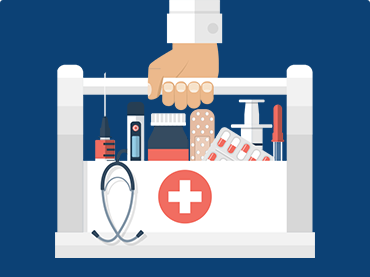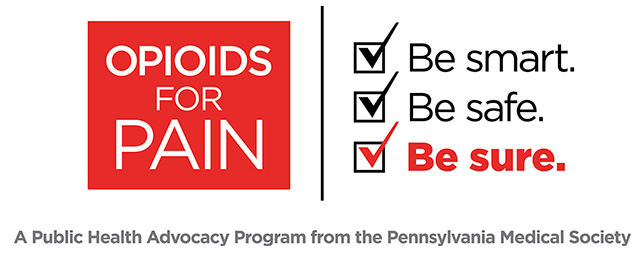What are the requirements for MD license renewal in PA for 2022?
The State Board of Medicine regulations state that to renew a license, a physician will need:
- 100 total credit hours of CME in the two-year license cycle
- A minimum of 20 of the total credit hours in AMA PRA Category 1 credit
- 12 credit hours in the areas of patient safety or risk management (either Category 1 or Category 2)
- 2 continuing education credits from a Department of Human Services (DHS) approved course on the topic of mandated child abuse recognition and reporting
- 2 hours of continuing education in pain management, identification of addiction, or the practices of prescribing of opioids.
When does a license cycle begin and end?
License cycles begin January 1 of the odd year through December 31 of the next even year. MDs must renew by December 31 of the next even year.
Who will I need to report to in order to renew my license?
The State Board of Medicine is not requiring a report of CME at the time of license renewal. The license renewal form will contain an area for physicians to attest that they have completed the required hours.
By attesting that the requirement is completed, a physician may be subject to a random audit by the Board of Medicine. If audited, a physician will need to show evidence of the completion of the required credit hours. Failure to produce the requested evidence will result in a fine and possible suspension of license.
What is the difference between Category 1 and Category 2 credit hours?
Category 1 and Category 2 are defined by the American Medical Association (AMA).
Category 1 activities are those that have been approved by an accredited provider. You will know an activity is Category 1 because all of the promotional materials will contain a statement similar to the following:
“This activity has been planned and implemented in accordance with the Essential Areas and policies of the Accreditation Council for Continuing Medical Education (ACCME). The (sponsoring organization, such as the Pennsylvania Medical Society) is accredited by the ACCME to provide continuing medical education for physicians.”
“The (sponsoring organization) designates this educational activity for a maximum of (number of credits) AMA PRA Category 1 Credit(s) ™. Physician should only claim credit commensurate with the extent of their participation in the educational activity.”
Your CME certificate will also state that the activity has been approved for Category 1 credit and name the institution or organization that is awarding the credit.
Category 2 credit hours consist of self-directed learning or courses that have not been through a formal approval process. The following are some common examples of Category 2 activities:
- Reading authoritative medical literature
- Teaching medical students, residents or other health care professionals
- Research projects
- Consultations with peers and experts
- Using non-designated enduring materials
How do I prove Category 2 credits if I am audited?
The regulations state that Category 2 credit hours must be documented in the form of a physician log or diary and a certificate will be provided by the education program coordinator if it is a live program. Documentation in the form of a physician log or diary must include the following:
- Activity title
- Subject or content area
- Date(s) of participation (i.e., month/day/year)
- Number of credits claimed (actual time spent in the activity)
Do the patient safety or risk management credit hours need to be in Category 1?
According to the regulations, the patient safety or risk management credit hours can be in either Category 1 or Category 2.
If I have 12 Category 1 credit hours in patient safety or risk management topics, may I count these for both the Category 1 requirement and the patient safety/risk management requirement?
Yes. If any of the patient-safety credit hours that a physician has earned are Category 1 credit hours, they can be counted toward both the Category 1 requirement and the patient safety/risk management requirement.
How do I know if a CME activity satisfies the requirement for patient safety or risk management?
The following list of topics that will satisfy the patient safety/risk management requirement:
- Improving medical records and record keeping
- Reducing medical errors
- Professional conduct and ethics
- Improving communication among physicians and with other health care personnel
- Communication between physicians and patients
- Preventive medicine education
- Health care quality improvement
As long as the CME activity falls within these topics, you can count it toward the patient safety/risk management requirement. The course does not have to state, and very likely may not, that it is a patient safety or risk management course.
Do the credits I earn to satisfy the child abuse recognition and reporting requirement count towards the 100 credit hour requirement?
The child abuse recognition and reporting requirement can be met with any course approved by the State Board of Medicine. However, in order to qualify for the 100 credit hour requirement, the credits must be earned at a DHS approved course.
Can the credits I earn to satisfy the pain management, identification of addiction, or the practices of prescribing of opioids requirement count towards the 100 credit hour requirement?
Yes, These count as part of the 100-hours required for continuing education, not in addition to the 100-hour requirement.
Do the pain management, identification of addiction, or the practices of prescribing of opioids credit hours need to be in Category 1?
The State Board of Medicine will accept opioids continuing education courses in either Category 1 or Category 2.
I am a prescriber who does not have a DEA registration number. Do I need to satisfy the requirement for pain management, identification of addiction, or the practices of prescribing of opioids?
Prescribers without a DEA number and who don’t use the registration of another person or entity as permitted by law to prescribe controlled substances are exempt from this education requirement.
Are the requirements different if I am reporting for an initial license?
Yes. The requirements include:
- Three continuing education credits from a DHS approved course on the topic of mandated child abuse recognition and reporting.
- Documentation acceptable to the licensing board of the completion of at least two hours of education in pain management or identification of addiction and at least two hours of education in the practices of prescribing of opioids. The education may occur as part of the individual’s professional degree educational program or continuing education program. This documentation must be submitted no later than 12 months after obtaining an initial license or certification.
Are the requirements different if I have an active/retired license?
Yes. A licensee who holds this license only needs to fulfill the child abuse recognition and reporting requirement as well as the pain management, identification of addiction and practice of prescribing or dispensing of opioids requirement.
Is a volunteer licensee required to complete continuing medical education requirements?
If a volunteer physician only holds an active volunteer license (with an inactive/expired/active-retired unrestricted license), 20 hours of continuing medical education per license cycle is required.
Volunteer licensees are subject to the CME requirements imposed by the Child Protective Services Law (CPSL) and must take 2 approved CME hours in mandated child abuse recognition and reporting.
Volunteer licensees are not required to complete the opioids education requirements if they meet the following requirements:
- Is exempt from the Drug Enforcement Administration’s (DEA) requirements for registration under its applicable laws and regulations, as well as any state law; and
- Does not use the registration of another person or entity as permitted by law to prescribe controlled substances in any manner.
Volunteer physicians who hold an active unrestricted DO or MD license must fulfill the requirements for those licenses instead.
The Pennsylvania Medical Society has a more in-depth FAQ on renewing your medical license, available here. (You will need to log in to your Pennsylvania Medical Society account)
To renew your license, please visit either the PA Department of State’s Licensing Services page or the Pennsylvania Licensing System page.




